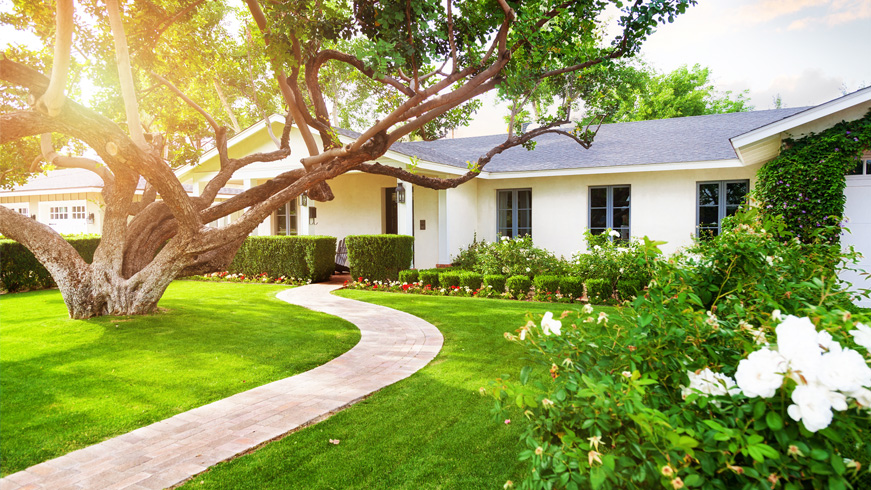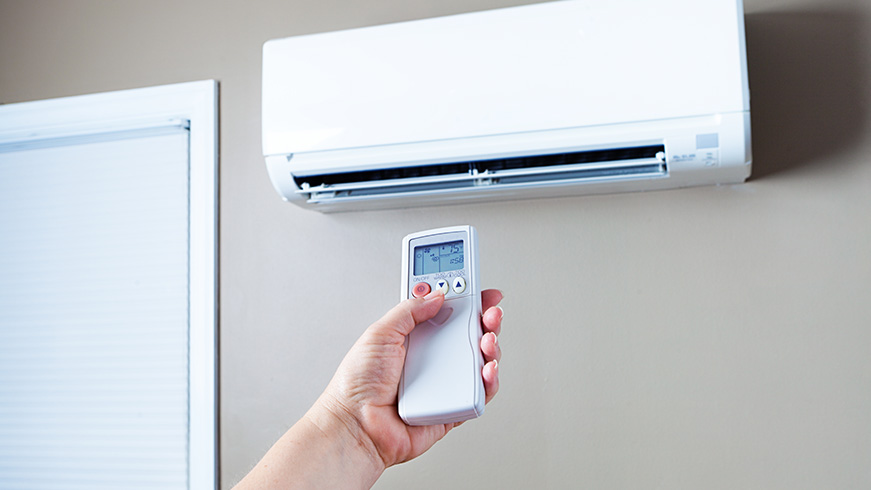Managing your energy bill has a lot to do with how you control your home’s climate. Peak energy usage occurs in the summer and winter, when you’re using your air conditioning and heating systems most frequently. There are great ways to reduce these costs from the inside of your home by adjusting your thermostat and following these tips. However, many people don’t know that you can control your home’s temperature from the outside, as well. You can manage your climate, energy usage, and financial expenditure by planting trees around your home.
Trees are great for providing shade in the hot summer months. You can apply this concept to your home by strategically planting trees around it to keep it cooler in the summer. By planting large deciduous trees on the east and west of your home, you can reduce your air conditioning bill by up to 35%. These trees should have a mature height of at least 25 feet and be planted between 10 and 20 feet from your house. Smaller deciduous trees or evergreens can be planted to the northwest and northeast of your home. Avoid planting trees to the south, as they won’t provide much shade in the summer and will actually block important heat and sunlight in the winter. You can also plant trees to shade your air conditioning unit, keeping it cooler and running more efficiently. Just remember to leave a few feet between the unit and anything you plant, as you don’t want to obstruct air flow.
In the winter time, it’s important to consider warmth and wind when deciding where to plant trees. Because the sun is lower in the sky in the winter, you want to give the sunlight an unobstructed path to the south side of your house. This means avoiding planting trees, especially evergreen trees, on that side of your home. If you must have trees in that direction, place them at least two and a half times their mature height away from the house, and four times their mature height if you’re planting them to the southwest or southeast.
Trees make a great windbreak in winter months. They can effectively reduce winds blowing at 35 MPH down to 10 MPH and therefore lower your heating costs by 30%. In the winter the wind generally blows from the North and West, so this is where you’ll want to plant at least two rows of trees. The best trees for this job are Junipers, Spruces, Firs, Douglas-firs, and evergreen shrubs. The trees should be planted between one and two mature tree heights from your home. Be warned that snow will accumulate most heavily on the downwind side of these trees so if there’s a drive way, walk way, or some other feature between them and your home, you may want to move them back a bit. Trees and shrubs planted close to your home will also act as insulation and help protect you from air leaks caused by the wind. You can make sure that your home is properly insulated by checking out this article.
A well-designed landscape that includes trees blocking the sun in the summer, blocking wind in the winter, and allowing the sun to heat your home in the cooler months can pay for itself in about eight years. Whether you fully landscape or just plant an extra tree or two in the right place on your property, you’ll see both your energy usage and your electricity bill decrease.



